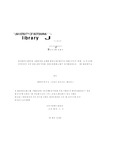| dc.contributor.author | Kere, Imbunya J. | |
| dc.date.accessioned | 2015-05-29T09:40:06Z | |
| dc.date.available | 2015-05-29T09:40:06Z | |
| dc.date.issued | 2015-05-29 | |
| dc.identifier.uri | http://hdl.handle.net/10311/1377 | |
| dc.description | A dissertation presented to the Faculty of Education University of Botswana in partial fulfillment of the requirement for the degree of Master of Education
Citation: Kere, Imbunya J. (2008) Substance abuse and religious education: a case study of selected secondary schools in Kenya, University of Botswana | en_US |
| dc.description.abstract | As the old adage goes, the Journey of a thousand kilometers starts with one step. Indeed the purpose of this study was to investigate the role of the Kenya secondary Religious Education (RE) Curriculum in educating students about substance abuse. To realize this, the R.E. Curriculum was to be investigated through the available aims and objectives, instructional materials and policy documents. The effects of substance abuse to learners, their families and society at large is colossal and R.E can go a long way in providing education about this social vice in the schools and the society. In this study, the researcher argues that R.E can play a pivotal role in empowering learners with knowledge, attitudes and skills that can enable them make responsible choices and thus resist the use of any drugs especially substance which is wholly for this study. Purposive sampling technique was used to select 7 secondary schools sampled from the 8 provinces in the Republic to participate in the study. The sample comprised of 7 school Principals, 14 R.E teachers, 7 R.E Officials, in Kenya known as provincial quality assurance and standards officer (PQASO) and 140 R.E students. A total sample population of 168 respondents was used in this study. Data collection instruments included a questionnaire for Religious Education teachers and students. Interview instruments were designed for Provincial Quality Assurance and Standards Officer (PQASO’s) and the school principals. The research findings obtained, indicated that substance abuse does exist in secondary schools in Kenya. The common substances abused include alcohol, cigarettes and marijuana amongst others. The study also found out that the instructional materials and methods used in the teaching and learning on topics on substance abuse are inadequate. Hie respondents suggested several probable ways which can be employed to curb this social vice in schools. This included extensive and vigorous peer education and enlightment campaigns on substance abuse and government increasing tax on legal intoxicating substances to deter students amongst others. The findings and recommendation of my study are hoped to assist in shaping policies on discipline in schools and education sector as a whole. The results may further assist education administrators to re-evaluate whether knowledge of the ill-effects of substance use does decrease or curb prevalence of use among adolescents. | en_US |
| dc.language.iso | en | en_US |
| dc.subject | Religious education curriculum | en_US |
| dc.subject | Learners | en_US |
| dc.subject | Substance abuse | en_US |
| dc.subject | Secondary schools | en_US |
| dc.subject | Peer education | en_US |
| dc.subject | Kenya | en_US |
| dc.title | Substance abuse and religious education: a case study of selected secondary schools in Kenya | en_US |
| dc.type | Masters Thesis/Dissertation | en_US |
| dc.rights.holder | University of Botswana | en_US |

